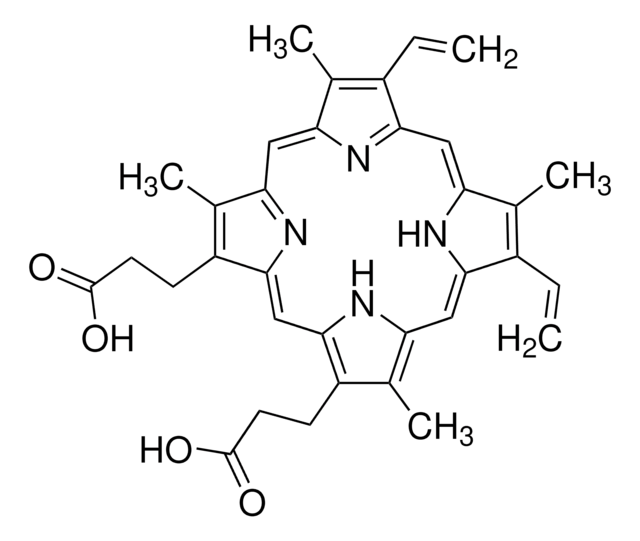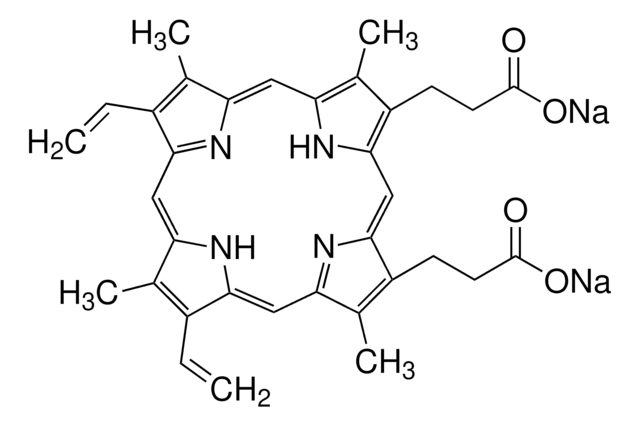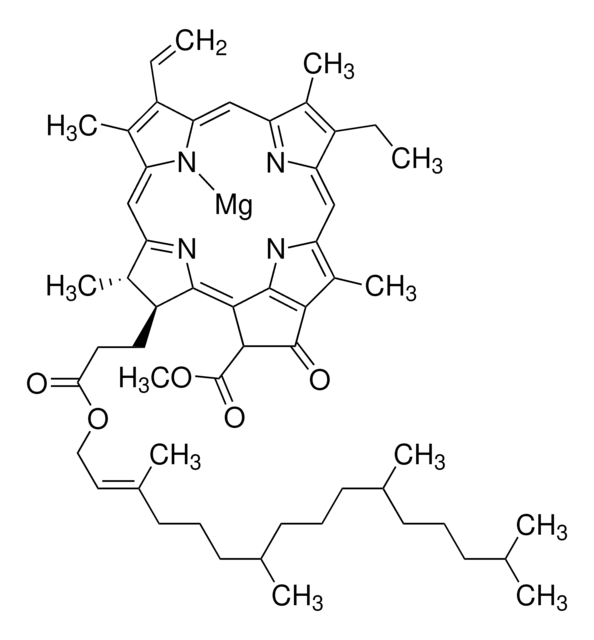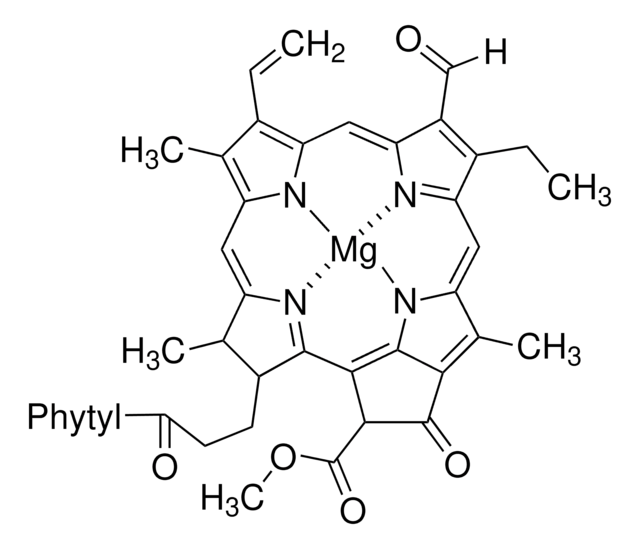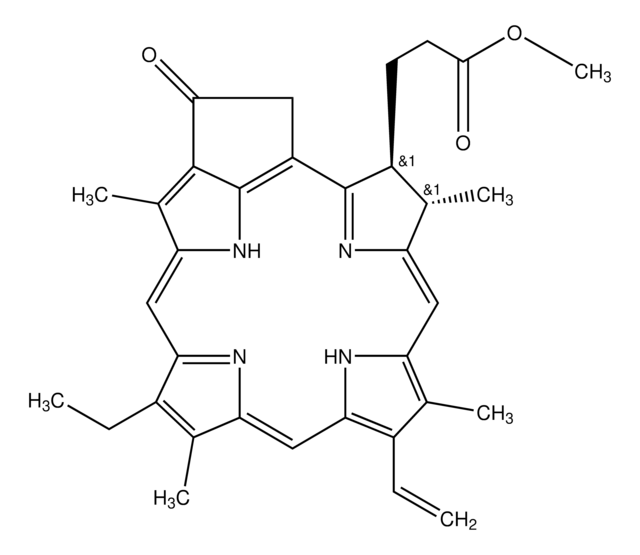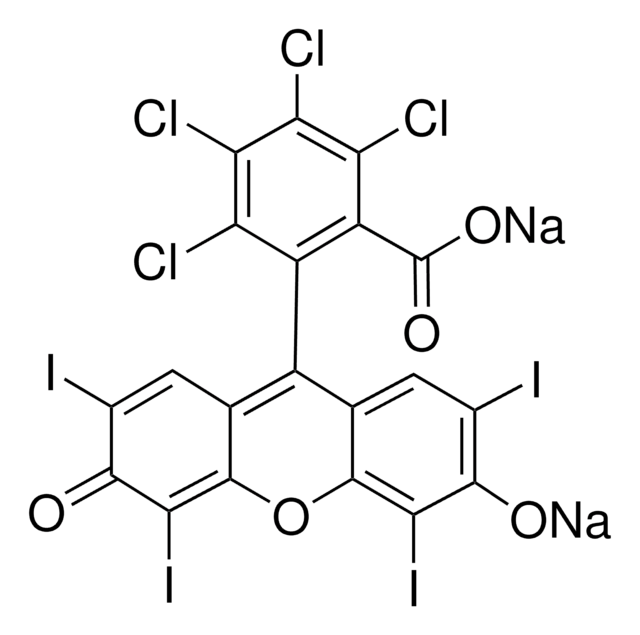SML1218
Pheophorbide-a
≥90% (HPLC)
Synonym(s):
pheophorbide a, (3S,4S,21R)-9-Ethenyl-14-ethyl-21-(methoxycarbonyl)-4,8,13,18-tetramethyl-20-oxo-3-phorbinepropanoic acid, Deacetyl-2-vinylbacteriopheophorbide, Pheophorbide a5
About This Item
Recommended Products
Assay
≥90% (HPLC)
form
powder
storage condition
protect from light
color
blue, to dark brown to black
solubility
DMSO: 0.5 mg/mL, clear (warmed)
storage temp.
−20°C
SMILES string
O=C([C@@H]1C(OC)=O)C(C(N/2)=C1C([C@@H](CCC(O)=O)[C@@H]/3C)=NC3=C/4)=C(C)C2=C\C5=N/C(C(C)=C5CC)=C\C6=C(C=C)C(C)=C4N6
InChI
1S/C35H36N4O5/c1-8-19-15(3)22-12-24-17(5)21(10-11-28(40)41)32(38-24)30-31(35(43)44-7)34(42)29-18(6)25(39-33(29)30)14-27-20(9-2)16(4)23(37-27)13-26(19)36-22/h8,12-14,17,21,31,36,39H,1,9-11H2,2-7H3,(H,40,41)/b22-12-,23-13-,24-12-,25-14-,26-13-,27-14-,32-30-/t17-,21-,31+/m0/s1
InChI key
NSFSLUUZQIAOOX-QEWKCGBTSA-N
Looking for similar products? Visit Product Comparison Guide
Application
- for the photodynamic therapy (PDT) in oral cancer cell lines
- to test its effect on inducing oxidative stress and death in L. amazonensis
- to test its effect on the viability of HeLa cells
Biochem/physiol Actions
Other Notes
Storage Class Code
11 - Combustible Solids
WGK
WGK 3
Flash Point(F)
Not applicable
Flash Point(C)
Not applicable
Regulatory Information
Choose from one of the most recent versions:
Certificates of Analysis (COA)
Don't see the Right Version?
If you require a particular version, you can look up a specific certificate by the Lot or Batch number.
Already Own This Product?
Find documentation for the products that you have recently purchased in the Document Library.
Our team of scientists has experience in all areas of research including Life Science, Material Science, Chemical Synthesis, Chromatography, Analytical and many others.
Contact Technical Service